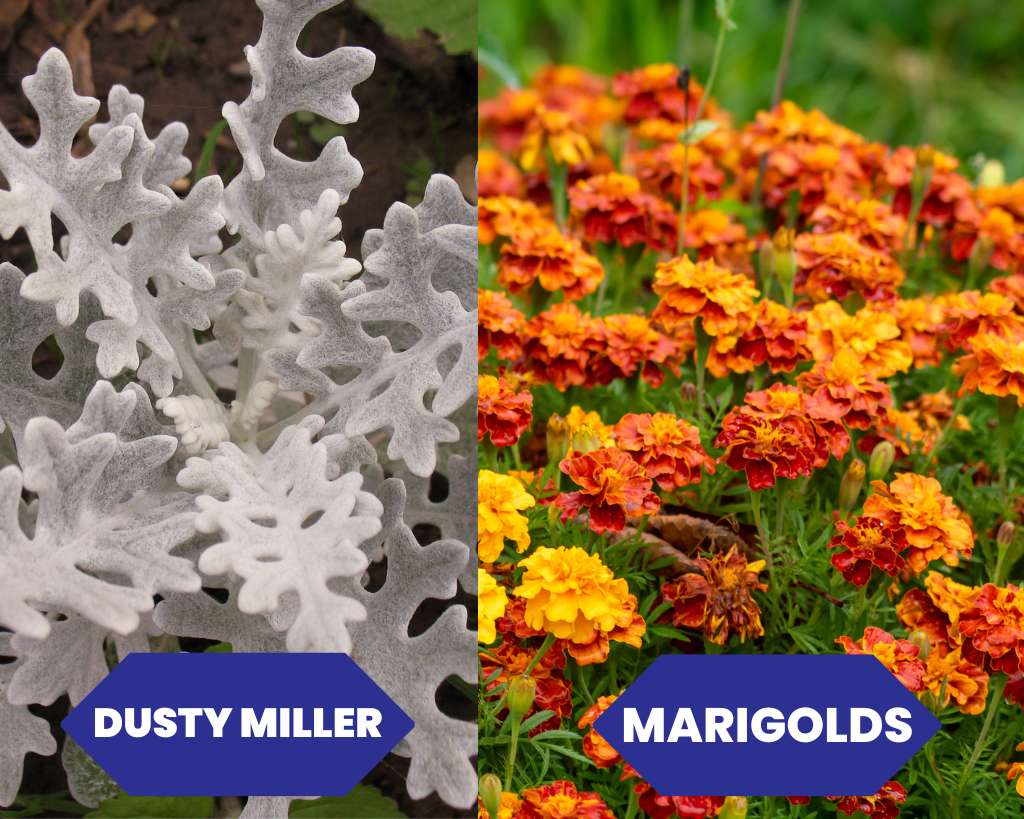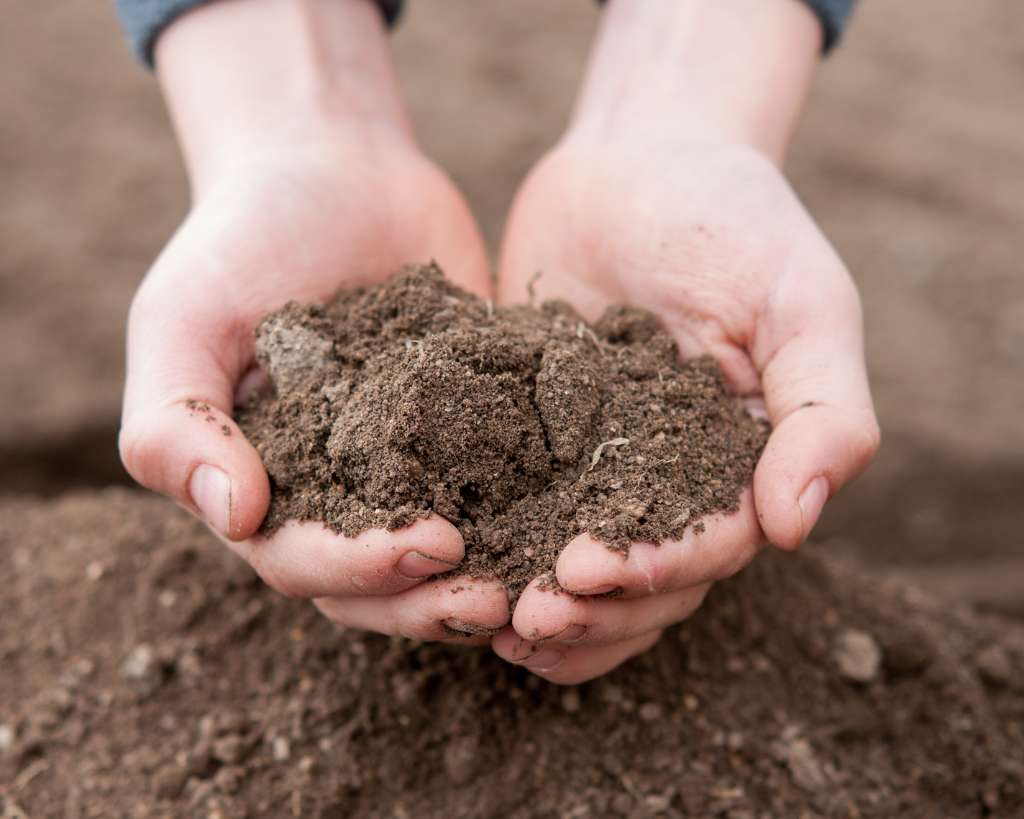Are you looking to add a touch of color and texture to your garden? Look no further than dusty miller and marigolds! These two plants make for a stunning, low-maintenance combination that will quickly make your garden flourish.
Dusty miller adds a unique touch to any garden with its soft and silvery leaves. This plant thrives in full sun and well-drained soil, making it the perfect complement to marigolds, requiring plenty of sunlight. Marigolds come in various vibrant colors, from sunny yellow to deep orange, and their blooms will add a pop of color to any space.
But it’s not just about aesthetics. Dusty miller and marigolds are also incredibly easy to care for, making them an excellent choice for gardeners of all experience levels. With just a little water and the occasional pruning, these plants will thrive and beautify your garden for months.
Understanding Dusty Miller and Marigolds
Dusty Miller, also known as Silver Ragwort or Jacobaea maritima, is native to the Mediterranean region of Europe and North Africa. The foliage of Dusty Miller is its most distinctive feature, with deeply lobed leaves covered in fine, silvery-grey fuzz.
It can be planted as a border or background plant in a mixed bed, where its silvery foliage can complement other colorful blooms, such as pansies. Dusty Miller is also great for contrasting darker foliage plants like purple or burgundy.
Marigolds are flowering plants known for their vibrant and cheerful blooms. They are probably one of the most popular flowers in different parts of the world. These pretty flowering plants have originated from Central America and Mexico.
Marigolds come in various colors, including yellow, orange, and red. Some varieties even have bi-colored or tri-colored flowers. The flowers are commonly diminutive and have a daisy-like appearance, comprising a disk at the center encompassed by petals. The foliage of marigolds is often green and fern-like, and some varieties have aromatic leaves that can be used in cooking or for medicinal purposes.
Both plants are members of the Asteraceae family, which also counts sunflowers and daisies among its members.
Can You Plant Dusty Miller And Marigolds Together?

Yes, it is possible to plant Dusty Miller and Marigolds together in the same garden bed or pots. These two plants can complement each other nicely, with the bright, cheerful blooms of the Marigolds contrasting nicely with the silvery-grey foliage of the Dusty Miller.
When planting these two plants together, it is essential to consider their individual needs to ensure they both thrive. Let’s look at the growth requirements of each plant.
Soil

Both Dusty Miller and Marigolds thrive in well-drained soil with a good amount of organic matter. Make sure the soil is not too heavy or compacted, as this can lead to poor drainage and root rot.
The ideal pH range for growing these plants is between 6.0 and 7.0. If the soil is too acidic or alkaline, it can make it difficult for the plants to get the nutrients they need, which can cause stunted growth and yellow leaves.
Sunlight
Dusty Miller and Marigolds both prefer full sun to partial shade. Plant them in a spot with at least 6 hours of sunlight daily.
Season
Dusty miller and marigolds can be planted in the spring after the last frost. They will continue to grow throughout the summer months.
Dusty miller can be an annual or a perennial plant, depending on the climate and growing conditions. It is commonly grown as a plant that lasts for a year in colder areas, but it can grow back in warmer areas every year.
Marigolds, on the other hand, are typically grown as annuals, but some varieties may also be perennial in warmer climates. However, most gardeners treat marigolds as annuals and replant them each year.
Watering
Both plants have similar watering requirements and prefer soil that is kept consistently moist but not soggy. Water deeply once a week or more frequently during hot, dry weather.
Fertilizer
Dusty Miller and Marigolds do better when they are fertilized regularly, especially while they are growing. Use a balanced, water-soluble fertilizer every 2-3 weeks to give them essential nutrients.
Over-fertilization can damage the roots of both plants. It will also hamper the growth of marigold blooms.
To avoid these problems, following the recommended dosage instructions on the fertilizer package and only fertilizing Marigolds and Dusty Miller during the growing season is essential.
How To Grow
Both Dusty Miller and Marigold can be planted from seed or seedlings. If you are planting seedlings, space them according to their mature size—Plant Dusty Miller towards the back of the bed or container, with the Marigolds in front. Dig a hole slightly larger than the root ball and gently loosen the roots before planting.
Design Ideas for Dusty Miller and Marigolds
Traditional Garden Bed: Create a classic garden bed by planting a row of Dusty Miller along the back edge and a row of Marigolds in front of them. You can repeat this pattern along the length of the bed or mix it up by planting clumps of each plant in a checkerboard pattern.
Container Garden: Plant Dusty Miller and Marigolds together in a large container to create a striking focal point. Use Dusty Miller as a backdrop, with the Marigolds spilling over the edge of the container. Add other annuals or perennials, like lamb’s ear, in complementary colors to create a layered look.
Border Planting: Use Dusty Miller and Marigolds to create a colorful border around a garden bed or along a walkway. Plant Dusty Miller along the back edge and the Marigolds in front, leaving enough space for each plant to reach its mature size. This will create a beautiful contrast between the soft, silver-gray foliage and the bright, colorful blooms
Cottage Garden: Create a charming cottage garden by planting Dusty Miller and Marigolds with other traditional garden plants, such as pansies, roses, lavender, and delphiniums. Mix the Dusty Miller and Marigolds throughout the garden bed to create a romantic, informal look.
Cutting Garden: Plant Dusty Miller and Marigolds in a cutting garden to enjoy fresh flowers indoors all season. Use the Dusty miller as a filler or background foliage and the Marigolds as the leading cut flower. You can also add other annuals or perennials in complementary colors and textures to create a variety of arrangements.




